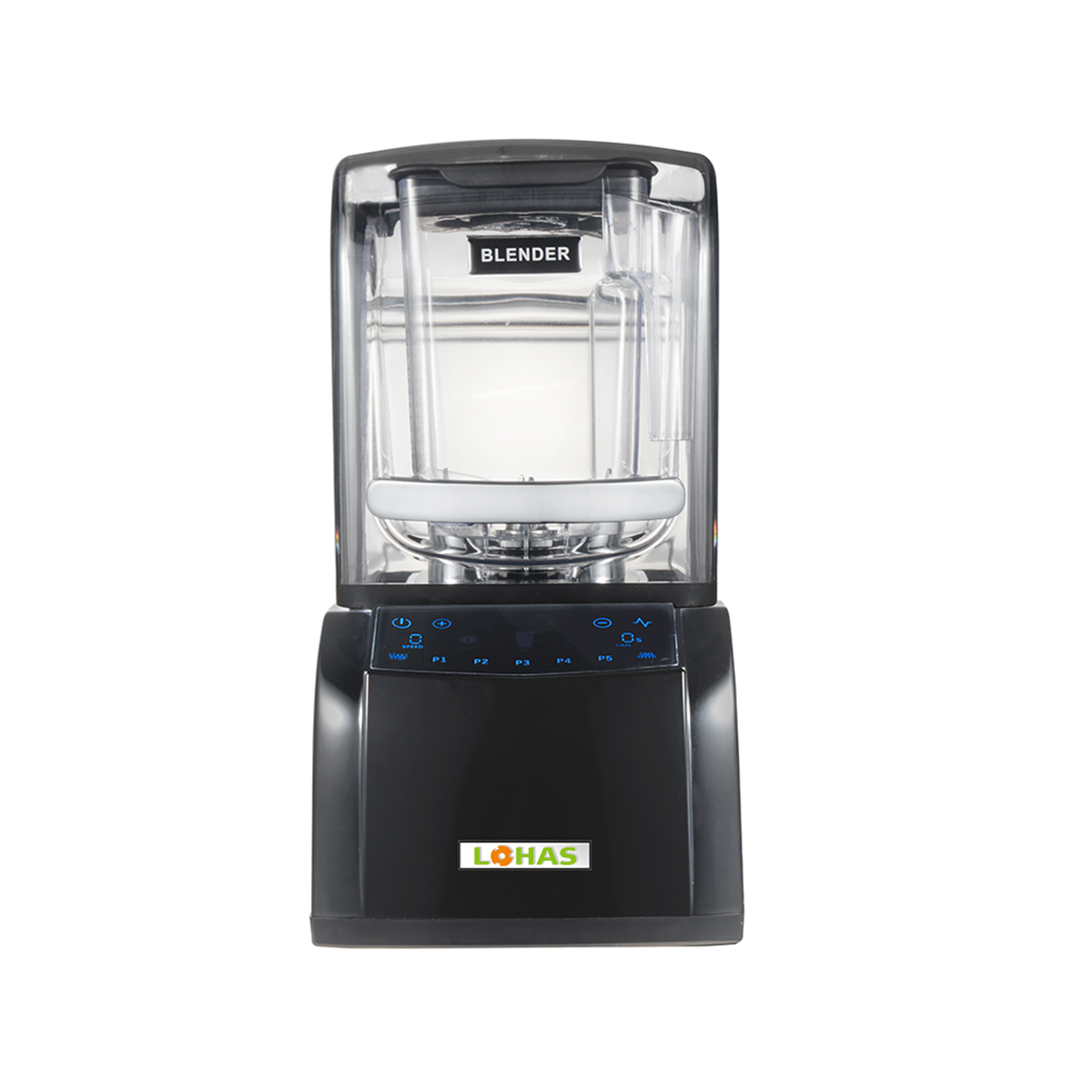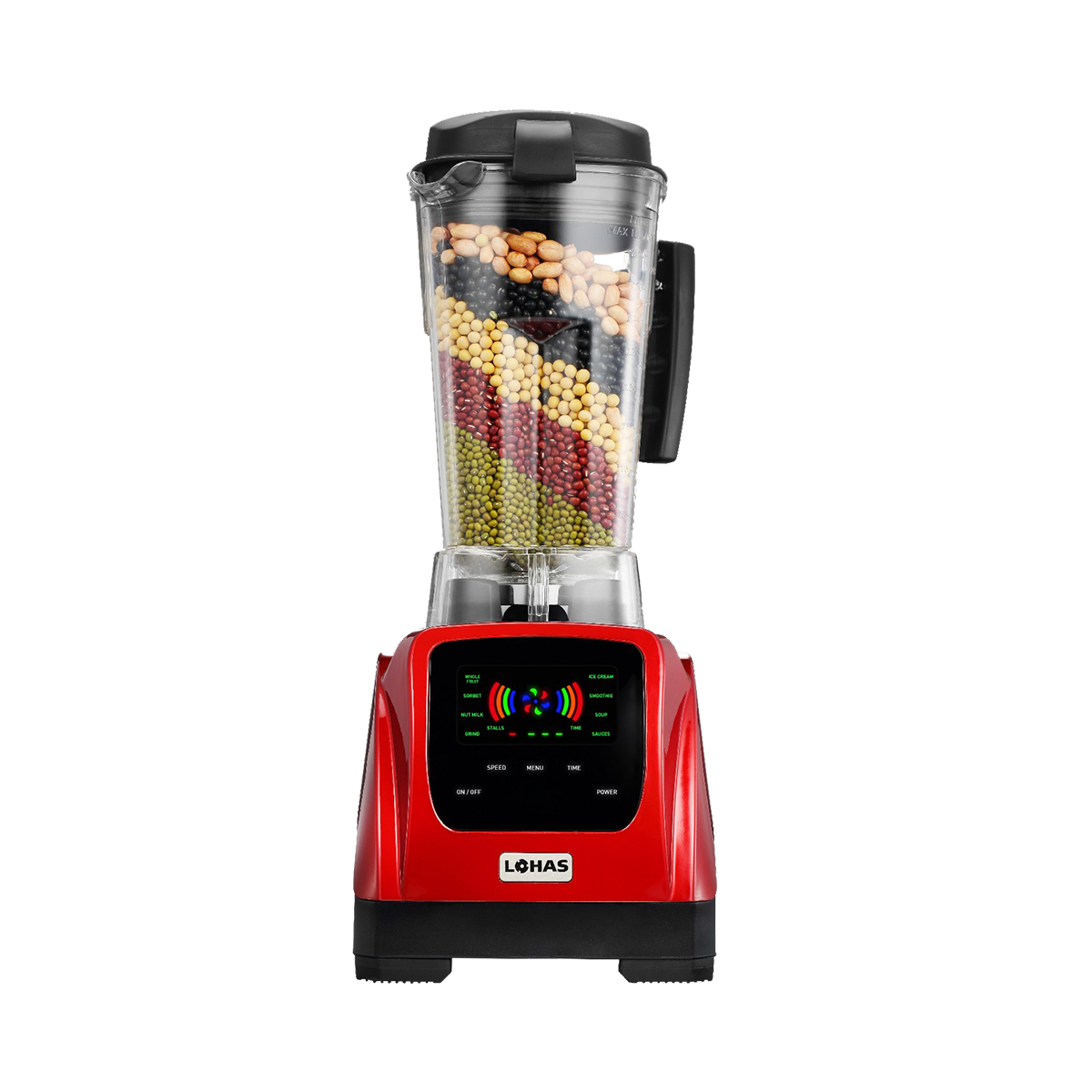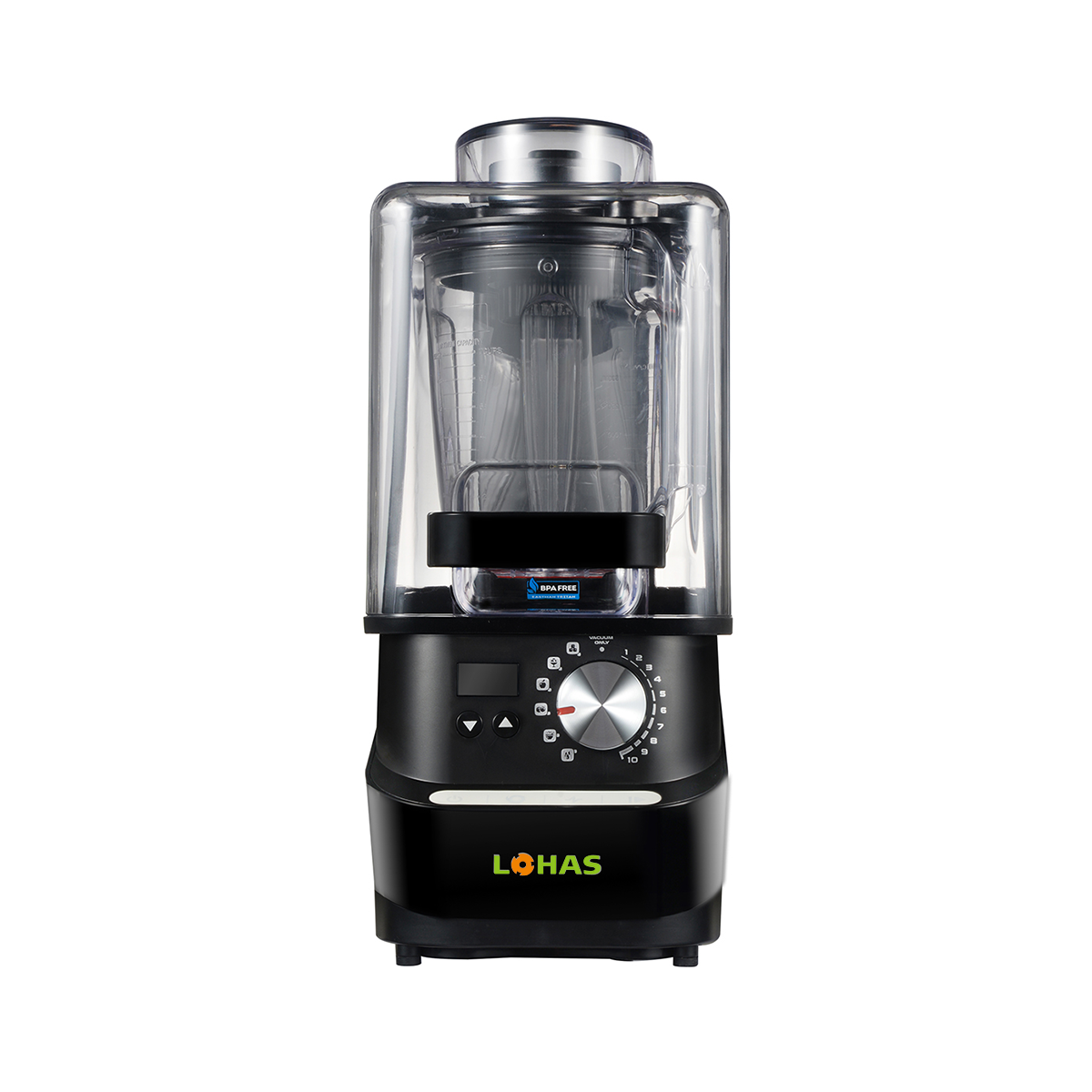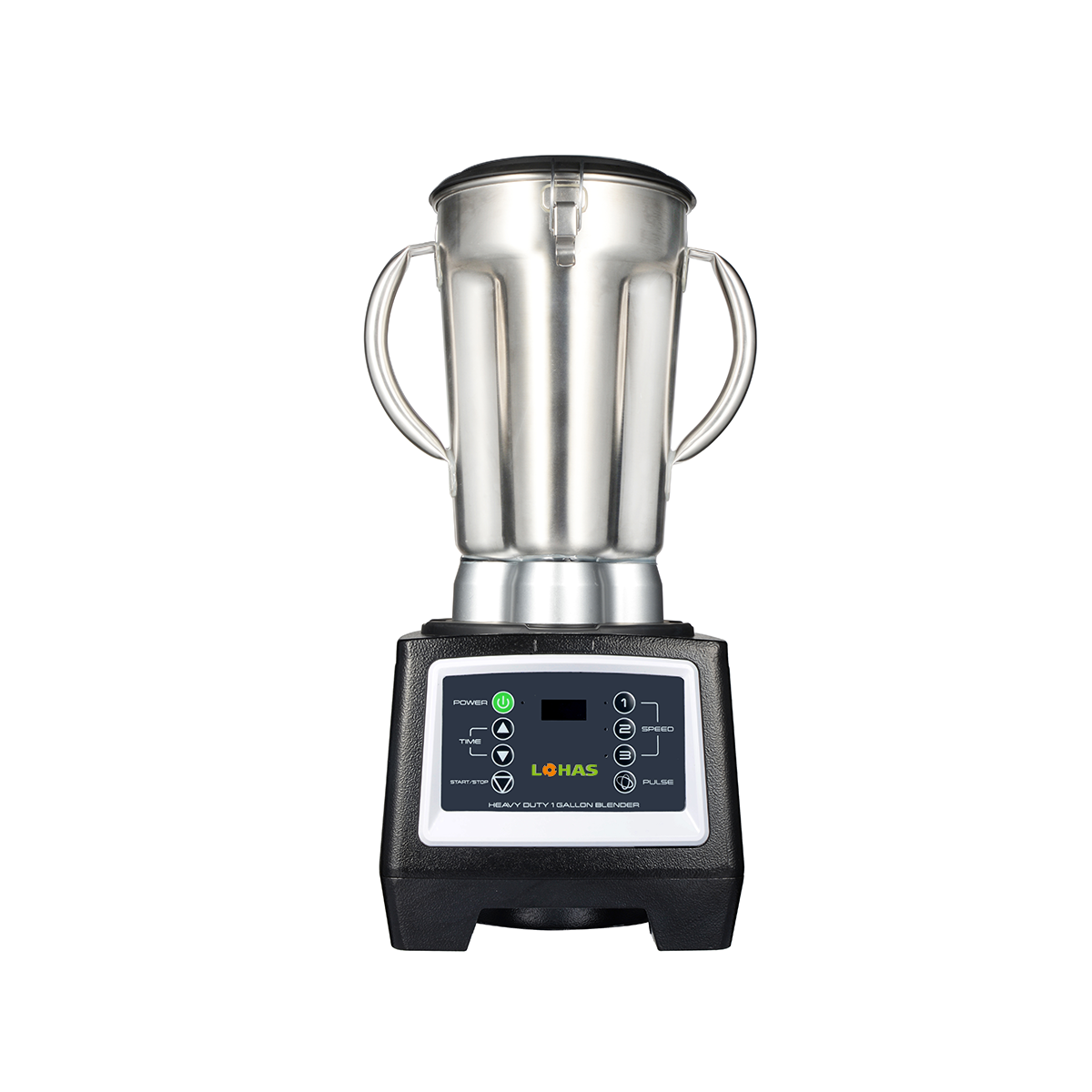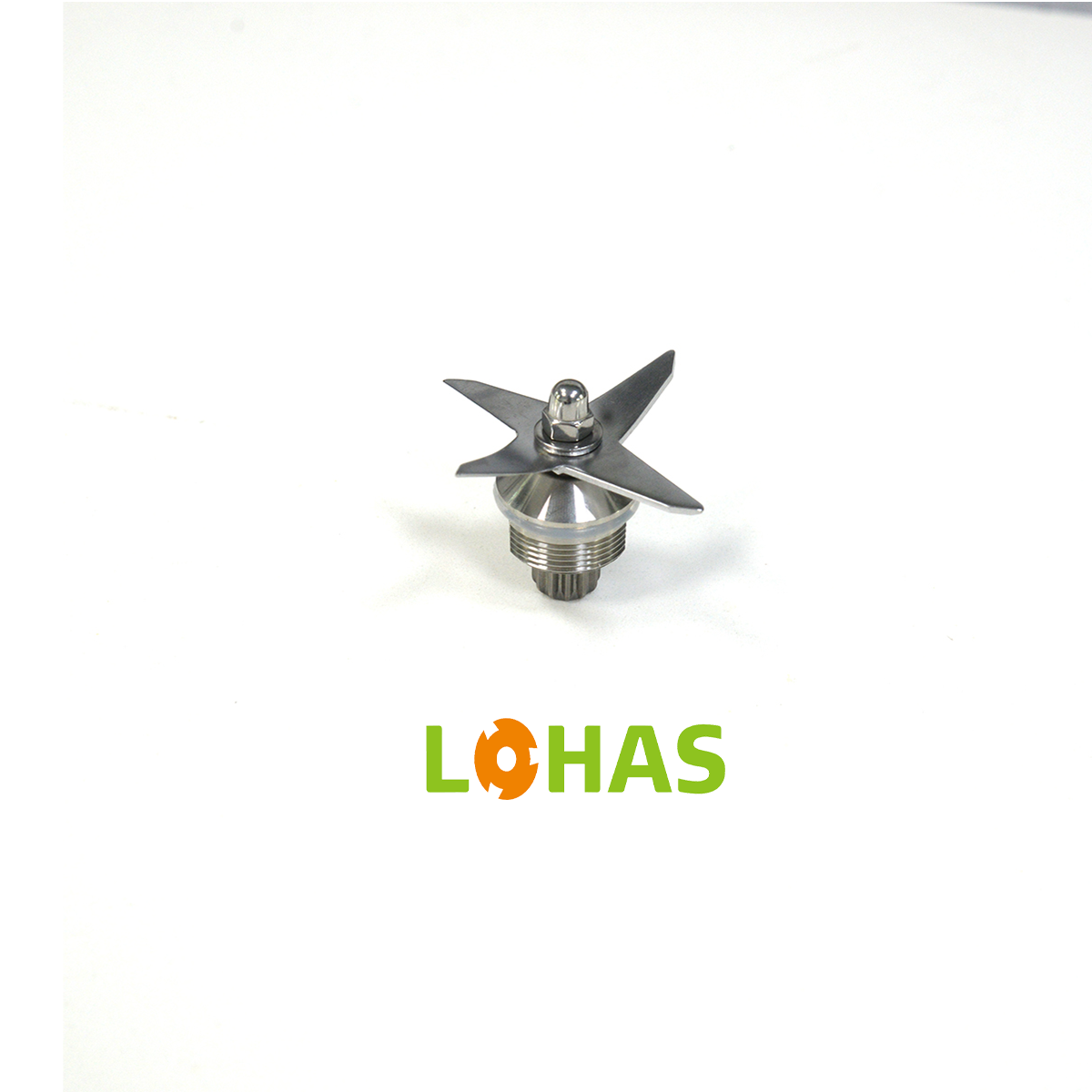Power and Motor Strength: Essential for Daily Blending
Understanding Wattage and Performance
Wattage is crucial in determining an electric blender's power and overall performance. Most blenders range from 300 to 1,500 watts, with higher wattage typically indicating stronger performance. This is especially important for tackling tough ingredients like ice and frozen fruits. Research confirms that blenders with higher wattage excel in blending efficiency, producing smooth textures in less time. However, wattage alone doesn't ensure quality. It's important to consider how the motor harnesses this power, balancing energy consumption and blending performance, ensuring that your electric blender operates efficiently and effectively.
Motor Durability for Long-Term Use
Motor durability is a key feature for long-lasting blenders, where quality construction and effective cooling mechanisms play a significant role. Many experts recommend choosing blenders with durable motors that include advanced cooling technologies, as this prevents overheating and prolongs life. With daily usage statistics indicating that consumers frequently use their blenders for a variety of tasks, a reliable motor becomes indispensable. The warranty offered by manufacturers can also be a good indicator of motor longevity and consumer trust. Many reputable blender brands provide warranties that cover several years, reflecting their confidence in the durability of their products.
Jar Design and Capacity: Finding the Right Fit
Tapered vs. Wide Jars: Which Suits Your Needs?
Choosing the right jar design is critical in enhancing the performance and usability of an electric blender. Tapered jars are renowned for their ability to create a powerful vortex, which is essential for efficiently blending ingredients to a smooth consistency. Studies demonstrate that this design significantly improves blending efficiency, especially for making emulsified sauces and creamy smoothies. In contrast, wide jars are better suited for blending large ingredients and are easier to clean and pour from. For instance, the Vitamix 5200’s tapered jar excels in creating vortexes, whereas the Breville Super Q’s wide jar makes cleaning a breeze. Ultimately, selecting the right jar design should be aligned with your intended usage—tapered jars for smoothies and sauces, or wide jars for soups and chunky mixtures.
Choosing the Right Capacity for Daily Use
Selecting the appropriate capacity for an electric blender is vital to meet daily usage needs and ensure optimal performance. Most blenders range from 32 to 72 ounces, catering to different household sizes and cooking requirements. Smaller households or individuals may prefer a 32-ounce jar for personal use, while larger families might benefit from a capacity around 72 ounces to avoid the hassle of multiple blending batches. It's crucial to pick a capacity that complements your daily recipe needs without overfilling, as overfilling can lead to inefficient blending and prolonged cooking times. A larger capacity also allows for batch cooking, making meal prep more manageable and efficient. Therefore, understand your daily usage and select a size that balances your household needs with practicality for different recipes.
Blade Quality and Material: Ensuring Efficiency
Stainless Steel Blades: Pros and Cons
Stainless steel blades are a popular choice in electric blenders due to their durability and resistance to corrosion. These blades can withstand the wear and tear of daily use, making them ideal for efficiently handling various ingredients, from soft fruits to tougher items like nuts or ice. The effectiveness of stainless steel in achieving a smooth consistency is well-documented in user reviews, where consumers often highlight the enhanced performance in their blending tasks. However, stainless steel blades can be somewhat more expensive compared to other materials, and they require regular maintenance to prevent dulling over time. This is crucial for maintaining optimal blender efficiency. In addition to the classic blade, variations such as serrated edges or multi-tiered designs impact blending quality and performance, offering a versatile approach to different culinary tasks.
Blade Design for Different Blending Tasks
Understanding how different blade designs cater to various blending tasks is essential for selecting a blender that meets specific requirements such as chopping, pureeing, or crushing ice. High-end models often come with specialized blade designs tailored for particular tasks, ensuring precise and efficient results. For instance, an electric blender with a blunt-edged blade is ideal for crushing ice, while sharp, angled blades are better suited for chopping fruits and vegetables. The design and configuration of the blades play a significant role in the quality of blending, directly affecting the texture and consistency of the final product. Therefore, when choosing a blender, it's important to consider the types of foods you'll be processing most frequently to ensure the blade design aligns with your needs. By aligning the blade design with intended use cases, one can achieve optimal efficiency and desired outcomes in their culinary creations.
Variable Speeds for Versatility
Variable speed settings in a blender are crucial for providing the versatility needed to achieve the desired textures, ranging from chunky to silky smooth blends. By adjusting the speed, you can finely control how thoroughly ingredients are mixed, which is essential for creating dishes that require precise consistency, such as soups or smoothies. Studies have linked the presence of variable speeds to increased user satisfaction and improved blending outcomes, emphasizing the critical role of versatility in everyday blending tasks.
User-friendly interfaces and intuitive controls further enhance blending experiences. They make it easier for users of all skill levels to navigate speed settings, allowing them to focus on achieving the perfect blend without the frustration of complex controls. This ease of use not only boosts confidence but tends to increase the frequency with which these appliances are used, making them indispensable in any kitchen.
Preset Programs vs. Manual Control
When deciding between preset programs and manual control on a blender, personal preference and usage context play significant roles. Preset programs offer convenience by automating processes for specific tasks like making smoothies, soups, and dips, ideal for those less familiar with blending specifics. Culinary experts often highlight the efficiency of presets in delivering consistent results, making them particularly appealing for busy individuals on the go.
On the other hand, manual control offers unparalleled flexibility for those who prefer customization in their blending processes. It allows users to experiment with speed and timing, offering a personalized touch to each blend and catering to those who love to innovate with textures and flavors. While preset programs are excellent for established recipes, manual controls can transform a regular blender into a tool for culinary creativity, accommodating unique blending preferences and achieving varied results across different dishes.
Ease of Cleaning and Maintenance: Simplifying Routine
Dishwasher-Safe Components
When choosing a blender, the ease of cleaning is a significant consideration, and dishwasher-safe components provide immense convenience. Typically, parts like the pitcher, lid, and blades are designed to be dishwasher safe, making clean-up a breeze after whipping up your favorite concoctions. This feature not only saves time and effort but also ensures hygiene by providing a thorough cleanse that hand washing might miss. Consumer feedback, such as reviews on platforms, commonly highlights the time-saving aspects of blenders with easy-to-clean components. To maintain these components for optimal performance, it's recommended to follow the manufacturer's guidelines. Ensuring parts are placed on the top rack and not exposed to high temperatures can dramatically prolong their lifespan.
Self-Cleaning Features for Convenience
Self-cleaning features in blenders revolutionize the way we think about convenience in kitchen appliances. These features work by adding a bit of water and a drop of dish soap to the blender post-use. The blender's high-speed blending action creates a whirlpool effect, cleaning the jar effectively within seconds. Statistics suggest a high level of user satisfaction with self-cleaning models, as they significantly reduce cleaning time and effort. Maintaining the self-cleaning capability of your blender involves regular checks and cleaning of the base to prevent buildup. Long-term usability also hinges on immediate cleaning after use, as this prevents food from drying and crusting onto the blender surfaces, ensuring that the self-cleaning feature remains effective for years to come.
FAQ
What wattage should I look for in a blender?
Most blenders range from 300 to 1,500 watts, but higher wattage is generally better for handling tough ingredients like ice and frozen fruits.
Which jar design is better for making smoothies?
Tapered jars are ideal for creating a powerful vortex essential for efficiently blending smoothies to a smooth consistency.
Are stainless steel blades worth it?
Yes, stainless steel blades are durable, resistant to corrosion, and ideal for handling a variety of ingredients efficiently. However, they may require regular maintenance to prevent dulling over time.
How do variable speed settings enhance blending?
Variable speed settings allow for fine control over the blending process, achieving the desired textures from chunky to smooth.
Are preset programs better than manual control?
This depends on personal preference. Preset programs offer convenience and consistency, while manual control provides flexibility for customization.
How do I maintain my blender's self-cleaning feature?
Regular maintenance involves ensuring the base is clean and performing the self-cleaning routine immediately after use to prevent food crusting.

